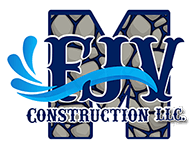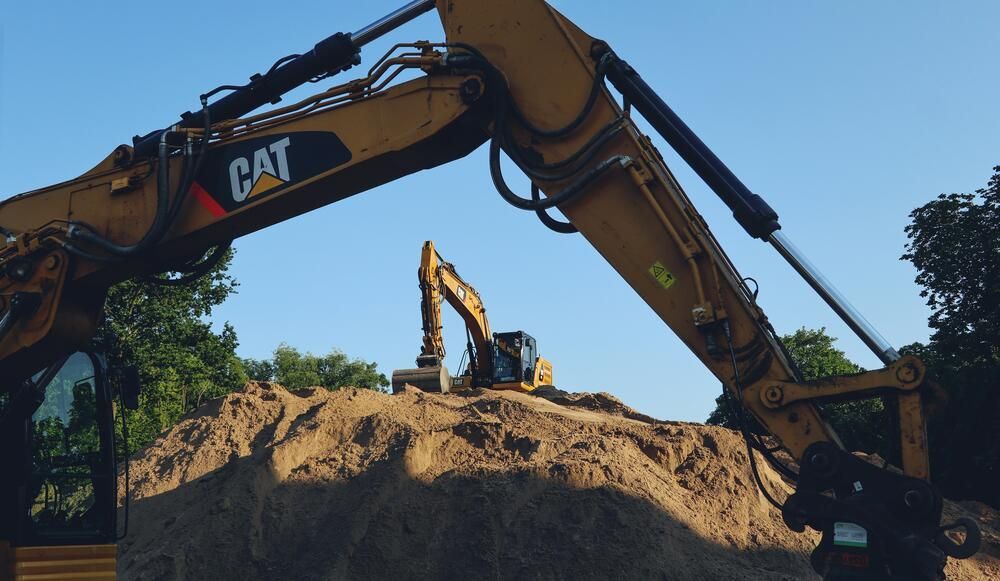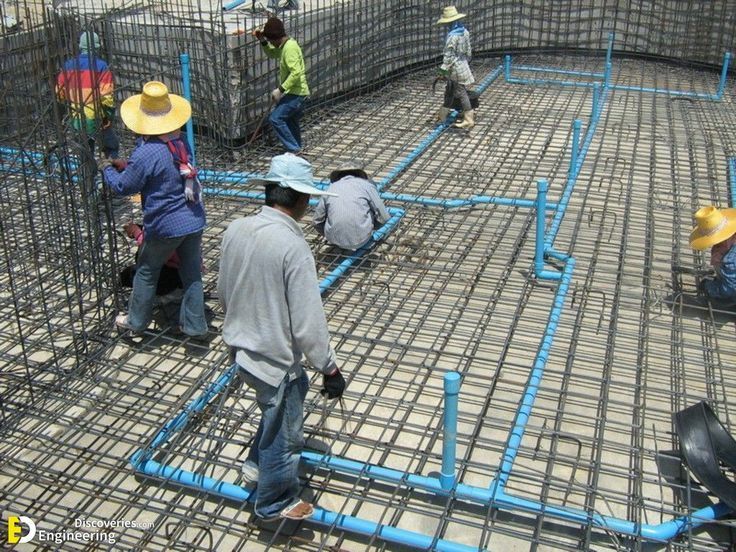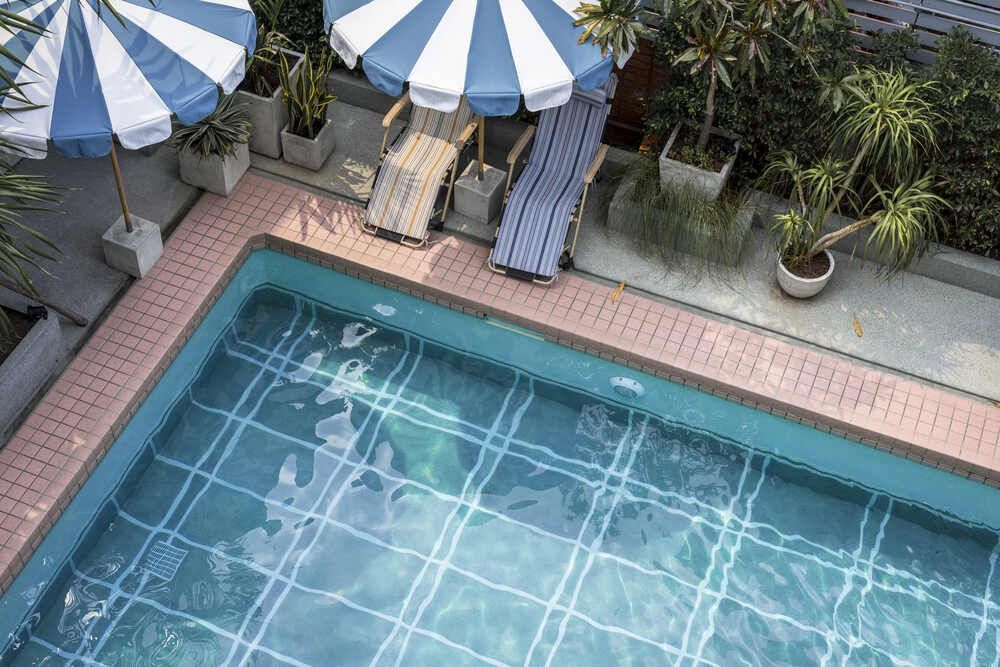6 Surprising Ways Pool Restoration Enhances Older Homes
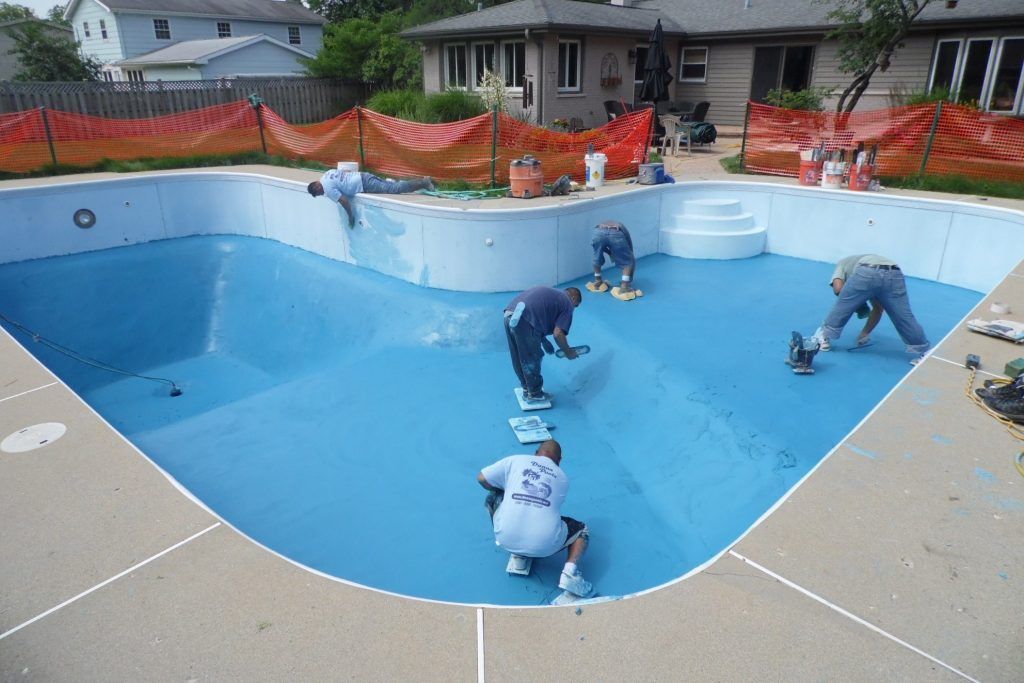
Key Takeaways
✔ Pool restoration significantly boosts property value by modernizing the pool's features and ensuring safety compliance.
✔ Updating an older pool with modern safety features reduces the risk of accidents and brings it up to current standards.
✔ Pool restoration lowers maintenance costs by introducing durable materials and efficient cleaning systems.
✔ Energy-efficient upgrades, such as pumps, heaters, and LED lighting, reduce energy consumption and utility bills.
✔ Enhancing the pool's aesthetics with new finishes, decking, and water features improves the overall appeal of the property.
✔ Strengthening the pool's structure and upgrading equipment extend its lifespan, preventing costly future replacements.
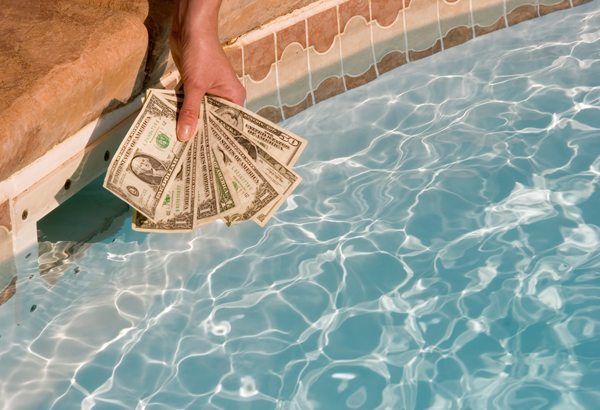
1. Increased Property Value
Restoring an old pool can significantly boost the property’s value, as a pool in good condition is an attractive feature for potential buyers. Pool restoration ensures the pool meets modern standards that make the entire home more appealing.
Why Does Pool Restoration Increase Property Value?
- Attractive First Impressions: A newly restored pool creates a positive first impression. Potential buyers are drawn to homes with clean, modern outdoor spaces.
- Safety Compliance: Updated pools meet current safety regulations. Buyers are more likely to invest in homes where safety concerns are addressed.
- Functional Upgrades: Modern pool features make the pool more functional. Enhanced lighting, heating, and filtration systems add convenience and value.
How to Increase Property Value Through Pool Restoration
- Upgrade Pool Surfaces: Resurfacing with modern materials like fiberglass or quartz extends durability. New finishes also make the pool look fresh and inviting.
- Install Energy-Efficient Equipment: Replacing old pumps and heaters with energy-efficient models reduces costs. These upgrades appeal to buyers looking for long-term savings.
- Add Modern Features: Adding water features like fountains or waterfalls elevates the pool’s luxury appeal. Smart controls for lighting and heating also add convenience for pool owners.
2. Improved Safety Standards
Restoring an older pool can significantly improve safety features. Many older pools have outdated elements that pose risks to residents and guests. Pool restoration helps ensure the pool meets modern safety standards for worry-free use.
Why Does Pool Restoration Improve Safety?
- Prevents Slipping Accidents: Many older pool decks become slippery over time. Restoring the deck with slip-resistant materials reduces the chance of falls.
- Eliminates Structural Hazards: Cracks or sharp edges in the pool can cause injuries. Pool restoration fixes these issues by resurfacing and repairing damaged areas.
- Updates Safety Barriers: Older pools may lack proper fencing or barriers. Adding compliant safety gates or pool covers helps prevent unauthorized access.
How to Improve Safety Through Pool Restoration
- Apply Slip-Resistant Coating: Modern coatings add traction to pool decks. This simple upgrade minimizes the risk of slipping, especially when wet.
- Repair Pool Surfaces: Filling cracks and smoothing sharp edges ensures a safer swimming experience. Restored surfaces reduce the risk of cuts or scrapes when in use.
- Install Safety Covers: Safety covers protect the pool when not in use. These covers help prevent accidental falls, especially for children or pets.
3. Reduced Maintenance Costs
Older pools often require frequent repairs, which can be costly and time-consuming. Pool restoration helps reduce these ongoing maintenance needs. Newer materials and equipment make pool care more manageable and affordable.
Why Does Pool Restoration Lower Maintenance Costs?
- Modern Materials Resist Damage: New surfaces, such as fiberglass or quartz, are more durable. They resist cracks, chips, and staining, which helps reduce repair frequency.
- Efficient Filtration Systems: Outdated filters can clog and require frequent cleaning. Restored pools often feature modern filters that work efficiently with less upkeep.
- Improved Water Circulation: New plumbing and pumps ensure better water flow. Proper circulation reduces algae buildup and chemical imbalances.
How to Reduce Maintenance Costs with Pool Restoration
- Resurface with Durable Materials: Choosing long-lasting materials like fiberglass, quartz, or pebble finishes extends the pool’s lifespan. This minimizes repairs related to wear and tear.
- Upgrade to Automated Cleaning Systems: Incorporating in-floor cleaning systems during pool restoration reduces manual maintenance. These built-in systems circulate water and clean debris with minimal effort, keeping the pool consistently clean and reducing the need for additional cleaning equipment.
- Replace Old Plumbing: New pipes and fittings improve water circulation, ensuring balanced water chemistry and reducing the need for frequent chemical treatments. Plumbing replacement may be necessary if the existing system shows signs of leaks, corrosion, or poor water flow, which can compromise pool hygiene and efficiency over time.
4. Enhanced Energy Efficiency
Older pools often use inefficient systems that drive up energy bills. Pool restoration replaces outdated equipment with energy-efficient options. These upgrades help reduce costs and minimize environmental impact.
Why Does Pool Restoration Improve Energy Efficiency?
- Efficient Pumps Use Less Power: Modern pumps require less energy to circulate water. They save on electricity while maintaining optimal performance.
- Eco-Friendly Heating Systems: New pool heaters warm water more effectively. Energy-efficient heaters reduce consumption and lower utility bills.
- LED Lighting Saves Energy: Traditional pool lights consume more power. LED lights use less energy and last longer, reducing replacement needs.
How to Boost Energy Efficiency Through Pool Restoration
- Install Variable-Speed Pumps: These pumps adjust speed based on need. They reduce energy use by running only at necessary levels.
- Upgrade to Solar Heating: Solar heating systems use renewable energy. They provide consistent warmth without increasing electricity costs.
- Replace Old Lights with LEDs: LED lights offer bright illumination while using less power. This switch helps reduce energy bills and maintenance costs.
5. Greater Aesthetic Appeal
A neglected pool can diminish the beauty of a home’s outdoor space. Pool restoration enhances the pool’s appearance and creates a more inviting environment.
Why Does Pool Restoration Enhance Aesthetic Appeal?
- Modern Finishes Improve Look: New pool surfaces, like colored quartz or pebble finishes, add a modern touch. These finishes make the pool visually stunning regardless of the home’s architectural style.
- Stylish Decking Transforms Spaces: Updated pool decks provide a fresh and stylish look. Materials like stamped concrete or stone enhance outdoor aesthetics.
- Water Features Enhance Design: Adding elements like waterfalls, fountains, or deck jets creates dynamic movement and sound, transforming the pool into a captivating focal point. These features elevate the pool's visual appeal and offer a spa-like atmosphere that enhances the overall outdoor experience.
How to Enhance Aesthetic Appeal with Pool Restoration
- Add Decorative Tiles: Installing ceramic, glass, or natural stone tiles along the waterline adds color and detail. Options like mosaics, textured patterns, or glow-in-the-dark tiles create unique visual effects that elevate the pool's design.
- Refinish with Unique Materials: Using finishes like glass beads or polished stone creates a distinctive look. These materials add depth and texture to the pool which elevates its visual design.
- Install Water Features: Adding fountains, scuppers, or bubblers boosts visual appeal and provides soothing soundscapes. These features also help regulate water temperature by promoting circulation, making the pool more comfortable.
6. Extended Lifespan of the Pool
Aging pools can develop structural problems that shorten their lifespan. Pool restoration reinforces the pool, helping it last for many more years. With the right upgrades, the pool can remain functional and safe for decades.
Why Does Pool Restoration Extend a Pool’s Lifespan?
- Reinforced Pool Structure: Restoration strengthens the pool shell. This prevents cracks and leaks that can cause long-term damage.
- Protective Coatings Prevent Wear: Modern coatings like epoxy, polyurea, or chlorinated rubber protect against weathering and chemical damage. These coatings reduce surface deterioration over time.
- Upgraded Systems Reduce Stress: New pumps and filters reduce strain on the pool’s structure. Efficient systems help maintain the pool’s integrity for many years to come.
How to Extend Lifespan Through Pool Restoration
- Apply Durable Plaster Finishes: Resurfacing with high-quality plaster materials increases longevity. These finishes resist cracking and damage, which helps prevent structural issues down the road.
- Seal Cracks and Leaks: Fixing leaks prevents water damage to the pool’s foundation. Sealing ensures the pool remains structurally sound in the long run.
- Upgrade Filtration Systems: Installing modern filtration systems, such as cartridge or DE (diatomaceous earth) filters, improves water clarity and cleanliness. These systems efficiently trap debris and contaminants, reducing maintenance and extending the pool's overall lifespan.
How to Budget for a Pool Restoration Project
With the U.S. pool market projected to grow to USD 10.33 billion by 2029, restoring a pool can be a significant investment. Fortunately, careful budgeting helps manage costs effectively. Understanding the factors that influence pricing, identifying hidden expenses, and exploring financing options can ensure the project stays on track. Here are six key tips to consider when planning a pool restoration budget:
1. Assess the Scope of the Project
Before starting a pool restoration, it’s essential to evaluate the pool’s condition thoroughly. A detailed inspection by a professional can identify cracks, surface damage, outdated equipment, or structural issues. Knowing the extent of repairs needed helps estimate overall costs accurately.
2. Prioritize Essential Repairs
Some restoration tasks are more urgent than others. Fixing structural problems, plumbing issues, or safety hazards should take priority. A well-maintained structure ensures the pool remains functional and safe for years. Prioritizing essential repairs helps allocate the budget to critical areas first, helping prevent long-term damage and additional expenses.
3. Research the Cost of Materials
Different restoration materials come with varying price tags. Fiberglass, quartz, pebble finishes, and tile each have distinct costs and lifespans. Researching these options helps determine what best fits the budget and desired outcome. Choosing durable materials may cost more initially but can reduce maintenance costs over time.
4. Factor in Labor Costs
Labor often makes up a large portion of pool restoration expenses. Rates can vary depending on the region, complexity of the work, and the contractor’s experience. Requesting quotes from multiple professionals provides a clear picture of the labor costs involved. Including labor in the budget ensures there are no unexpected expenses during the project.
5. Plan for Hidden and Unexpected Costs
Even with careful planning, unexpected costs can arise during pool restoration. Issues like underlying plumbing damage, additional structural repairs, or permit fees can inflate the budget. Setting aside a contingency fund of at least 10-15% helps cover these surprises. This financial cushion prevents delays or incomplete work due to budget shortfalls.
6. Explore Financing and Payment Options
Pool restoration can be expensive, but financing options can ease the financial burden. Home improvement loans, credit lines, or contractor payment plans can help distribute costs over time. Researching these options allows homeowners to proceed with restoration without depleting savings and makes pool restoration more manageable
How to Choose the Right Pool Restoration Experts
Selecting the right professionals for a pool restoration project is crucial for achieving quality results, especially as demand grows. In fact, by 2026, annual installations of in-ground swimming pools in North America are projected to reach 320,000. A qualified expert ensures the work is done efficiently, safely, and within budget. To help make an informed choice, here are six key factors to consider when selecting pool restoration experts:
1. Licenses and Certifications
Reputable pool restoration experts should have the proper licenses and certifications to operate in their region. These credentials ensure they meet industry standards and follow safety regulations. Certified professionals are more likely to deliver high-quality work and handle unexpected challenges. Always ask to see proof of licensing before committing to a contractor.
2. Experience and Specialization
Not all contractors have the same level of experience with pool restoration. It’s important to choose experts who specialize in restoring older pools and have a proven track record. Experienced professionals understand the complexities of fixing structural issues and upgrading outdated systems. This ensures the restoration is thorough and long-lasting.
3. Customer Reviews and References
Past customer experiences can provide valuable insight into a contractor’s reliability and quality of work. Online reviews and testimonials highlight both strengths and weaknesses. Requesting references and contacting previous clients helps confirm the expert’s ability to deliver on promises. Positive feedback from satisfied customers is a strong indicator of trustworthy service.
4. Communication and Customer Service
Effective communication is essential during a pool restoration project. Experts who listen to concerns, explain processes clearly and help regular updates ensure a smooth experience. Good customer service also includes prompt responses and professional behavior, which helps avoid misunderstandings and delays.
5. Estimates and Contracts
A clear, detailed estimate helps prevent unexpected costs and confusion. Reliable pool restoration experts provide written estimates that outline labor, materials, and potential additional fees. A comprehensive contract should also specify timelines, payment schedules, and warranties. This ensures both parties understand the project’s scope and expectations.
6. Insurance Coverage
Pool restoration projects can sometimes encounter accidents or property damage. Choosing experts who carry proper insurance, including liability and worker’s compensation, protects homeowners from financial risk. Insurance coverage ensures that any unforeseen incidents are handled professionally. Always verify insurance details before starting the project.
Frequently Asked Questions (FAQs)
How long does a typical pool restoration take?
The duration of a pool restoration project depends on the extent of the work needed. A simple resurfacing job may take 1-2 weeks, while more complex projects involving structural repairs and equipment upgrades could take 3-6 weeks. Weather conditions and material availability can also affect the timeline.
Can pool restoration change the shape or size of the pool?
Yes, pool restoration can include modifications to the shape or size of the pool. If the structure allows, experts can expand, shrink, or reshape the pool to fit new design preferences. These changes typically involve significant construction work and additional costs. It’s essential to discuss design goals and feasibility with a pool restoration professional before committing to major alterations.
Does pool restoration affect landscaping around the pool?
Depending on the scope of the work, pool restoration can impact surrounding landscaping. Heavy equipment, excavation, or decking replacement might disturb grass, plants, or hardscape features. Restoration experts can often suggest ways to minimize disruption or assist with post-restoration landscaping repairs. Planning also helps preserve the outdoor environment and ensures a cohesive final look.
Are there eco-friendly options for pool restoration?
Yes, several eco-friendly options are available for pool restoration projects. Using energy-efficient pumps, LED lighting, and solar heaters helps reduce energy consumption. Choosing sustainable materials, such as recycled glass tiles or low-impact pool finishes, can also minimize environmental impact. Discussing green solutions with a pool restoration expert ensures the project aligns with eco-conscious goals.
What is the difference between pool restoration and pool resurfacing?
Pool restoration is a comprehensive process that involves repairing structural issues, upgrading equipment, and enhancing aesthetics. It can include resurfacing but also addresses plumbing, safety features, and modern design updates. Pool resurfacing, on the other hand, focuses solely on replacing or repairing the pool's interior surface. Restoration provides a full upgrade, while resurfacing is a part of maintaining the pool's surface.
Invest in Expert Pool Restoration by FJV Construction!
FJV Construction in Danbury, CT, specializes in pool construction and pool renovation services. Our experienced team can bring older pools back to life with modern solutions. Serving Danbury, CT, FJV Construction ensures each restoration project meets the highest standards of quality and durability. Trust us to transform an outdated pool with expert masonry, custom waterfalls, and professional excavation services, adding beauty and lasting value to your property.
Contact us today and take the first step toward a stunning pool restoration!
Our Info
Monday to Friday from 7 am to 6 pm
Saturdays from 8 am to 5 pm
We Accept Cash and Checks
LOCATION
We Cover 80 Miles around Bethel,
Danbury, and Brookfield
Bethel, Connecticut 06801
Danbury, Connecticut 06810
Brookfield, Connecticut 06804
Navigation
Copyright FJV Construction, All Rights Reserved
